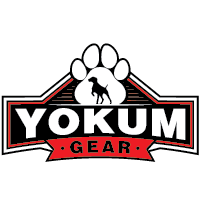Dog aggression is a complex and multifaceted issue that can manifest in numerous ways. Understanding the root causes of aggression in dogs is essential for addressing the behavior and ensuring a harmonious relationship between the pet and its owner. This article delves into the various reasons behind dog aggression and offers practical solutions for managing and mitigating aggressive behaviors.
Causes of Dog Aggression
1. Fear
One of the most common causes of aggression in dogs is fear. When a dog feels threatened, it may resort to aggression as a defensive mechanism. Fear-induced aggression can stem from a variety of sources, including unfamiliar environments, loud noises, or encounters with unfamiliar people or animals.
2. Territorial Behavior
Territorial aggression is another prevalent cause of aggressive behavior in dogs. Dogs are naturally protective of their living spaces and may become aggressive when they perceive an intrusion. This type of aggression can be observed in situations where a dog is guarding its home, food, or toys.
3. Social Hierarchy
Dogs are pack animals and have an inherent social structure. When a dog feels its position in the social hierarchy is being threatened, it may exhibit aggressive behaviors to assert dominance. This can happen within a multi-dog household or in interactions with other dogs in public spaces.
4. Pain or Illness
Dogs experiencing pain or discomfort due to illness or injury may become aggressive. The aggression in this case is often a result of the dog’s attempt to protect itself from perceived threats that could exacerbate its pain. It is crucial to consider medical issues as a potential cause of sudden aggression in otherwise docile dogs.
5. Frustration and Lack of Socialization
Frustration can lead to aggressive behavior in dogs that are not given adequate physical and mental stimulation. Additionally, a lack of proper socialization during the critical developmental stages can result in a dog that is fearful of new experiences and people, thereby leading to aggression.
Solutions to Dog Aggression
1. Identify and Address the Root Cause
The first step in addressing dog aggression is identifying the underlying cause. Consulting with a veterinarian or a certified animal behaviorist can provide insights into the reasons behind the aggression and guide the development of a targeted intervention plan.
2. Positive Reinforcement Training
Positive reinforcement training involves rewarding desired behaviors to encourage their repetition. This approach is effective in reducing aggression by teaching the dog alternative, non-aggressive responses to triggers. Over time, consistent use of positive reinforcement can help the dog associate previously triggering situations with positive outcomes.
3. Desensitization and Counter-Conditioning
Desensitization involves gradually exposing the dog to the source of its aggression in a controlled manner, starting at a level where the dog remains calm. Counter-conditioning pairs this exposure with positive experiences, such as treats or playtime, to change the dog's emotional response to the trigger.
4. Professional Training and Behavior Modification
In cases of severe aggression, seeking the help of a professional dog trainer or behaviorist is recommended. These experts can develop a customized behavior modification program that addresses the specific needs and triggers of the aggressive dog.
5. Medication
For some dogs, medication prescribed by a veterinarian can be an effective part of an aggression management plan. Medications can help reduce anxiety and stress, making other training and behavior modification techniques more effective.
Conclusion
Dog aggression is a challenge that requires a thorough understanding of its causes and a strategic approach to management. By identifying the root causes, employing positive reinforcement, and potentially seeking professional assistance, dog owners can work towards alleviating aggressive behaviors and fostering a peaceful and supportive environment for their pets. Remember, patience and consistency are key components of success in addressing dog aggression.

